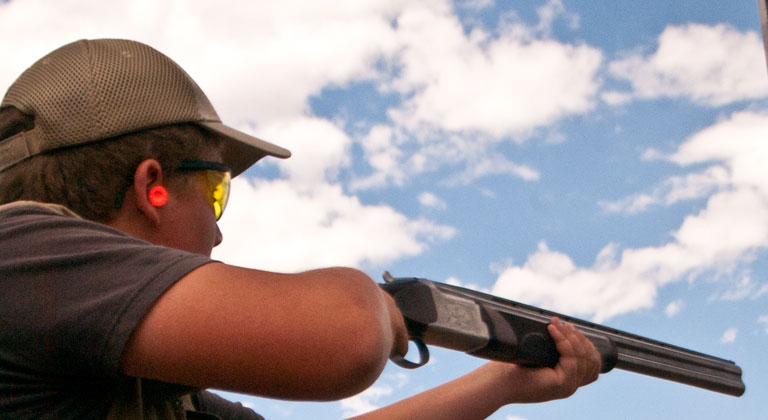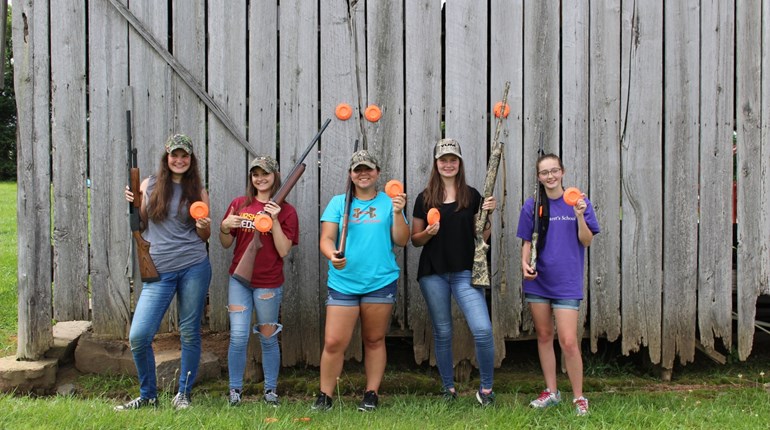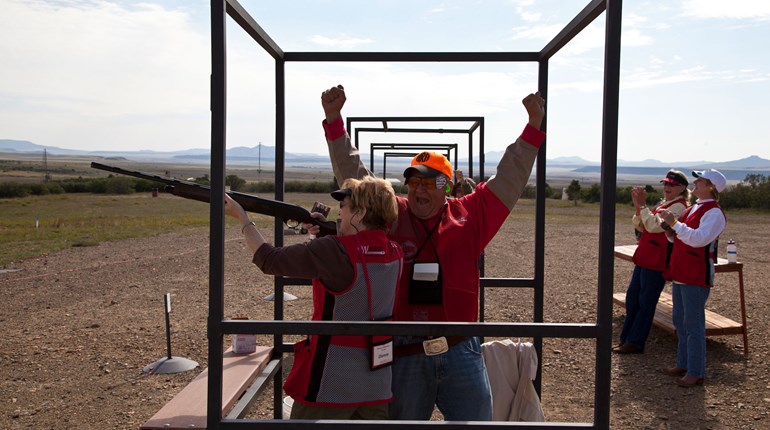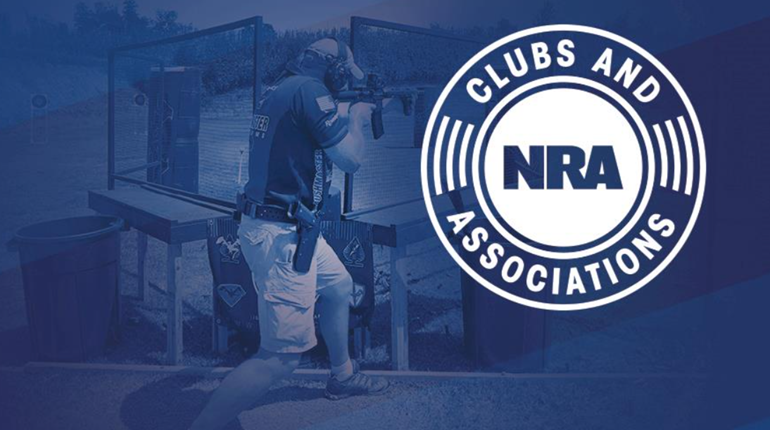
"I think I need to learn how to shoot a gun. Can you help me?"
Whether it's coming from a friend, colleague or family member, these are the words that everyone who loves the shooting sports should be thrilled to hear. It can be hard for someone who has never fired a gun before to admit that they need help. The fact that they've chosen to trust you with this critically important task should come as a tremendous compliment-as well as a serious responsibility. The first trip to the range can make or break a person's future interest in the shooting sports, so it's up to you to ensure that the experience is a positive one.
1. Emphasize Safety
The most important part of a first trip to the range should start long before you pull into the parking lot. Explain to your first-timer that safety comes first, and help show them what that means. Consider using an object that is not a firearm (say, a "blue gun" or a water pistol) to demonstrate the concept of a "safe direction." Show them how to move themselves around the gun to keep the muzzle pointed in a safe direction, and how to keep their finger outside the trigger guard. Go over the Three Rules (1.ALWAYS keep the gun pointed in a safe direction;ALWAYS keep your finger off the trigger until ready to shoot; ALWAYS keep the gun unloaded until ready to use) until they know them by heart.
2. Tell Them What to Expect
Explain the rules of the range that you plan to take them to ahead of time. Let them know what a Range Safety Officer (RSO) is, and emphasize that they must obey the RSO's directions. Tell them what the range commands mean in practical terms. They may get the idea of "Ceasefire," but they may not understand that they can't fire off just one more shot to empty the magazine.
3. Manage Their Expectations
Unfortunately, the discipline of marksmanship has been misrepresented by the media. Although there is such a thing as a "natural" shooter, most people require practice and instruction to get good at it. Let them know that, although this is a skill just about anyone can learn, nobody expects them to be Wild Bill Hickok or Calamity Jane right off the bat.
4. Keep the Situation Relaxed
If at all possible, try to take your newbie to the range at a time when it's not crowded. The experience of shooting for the first time is intimidating enough when you're not feeling self-conscious that you're being "judged" by more experienced shooters, or being continually startled by the report of a .308 from the next lane over. Speaking of which...
5. Reduce Noise as Much as Possible
Again, due to media misrepresentation, many new shooters will underestimate just how loud a gun's report can be. It's natural for people to startle or be made uneasy by repeated loud noises, even if they're expecting it. Many problems with flinching when shooting are due more to the noise than to recoil. Have them double up on ear protection, using both foam plugs and earmuffs. If you have legally obtained a suppressor for your firearm, this is the time to break it out!
6. Bring the Right Gun
Many of the folks who are just getting into shooting are doing so because they're concerned about personal defense. However, many personal-defense firearms can be quite intimidating to shoot, offering intense recoil and muzzle blast. This first trip to the range should be about gaining comfort and having fun, so focus on firearms that are easy to shoot. A long-barreled revolver chambered in .22, for example, or a rifle chambered in .17 HMR, will allow your newbie to focus on their fundamentals instead of how much their hands and shoulders hurt.
7. Bring the Right Guns, Plural
If possible, bring more than one firearm. Everyone's anatomy and preferences are different, so your newbie may discover that they actually like shooting a semi-auto better than a revolver, or that the rifle you brought is too long for them. Who knows-if all goes well, they may even want to try the .45 before they leave!
8. Make it Easy For Them to Succeed
Nothing breeds success like success. If your range will allow it, consider using paper plates as targets for the first several shots; that way, your newbie won't be upset with themselves for not hitting the 10-ring. Anything that hits the plate is a "win." If you're starting with a pistol, consider keeping the targets at no more than 7 yards. (After all, that's the distance at which the vast majority of self-defense shootings happen.) Focus on helping them achieve proper sight picture, a good trigger squeeze and a good stance, not on precise marksmanship.
9. Keep it Fun
As your new shooter gains confidence, why not try reactive targets? Targets that change color when they are hit are not only fun, but offer real-time feedback for the shooter. Perhaps some whimsical "zombie" targets will amuse them, or maybe they'd enjoy steel targets that fall down when hit.
10. Respect Their Space
You'll want to stand close enough to them that you can see what they're doing, but try not to breathe down their neck. It's quite likely that, at some point, you'll need to help adjust your mentee's stance or grip. Even if you know this person well, before you touch them, let them know why and ask their permission. ("I need to adjust your stance. May I touch your elbow?") Do not touch them without their permission unless there's a serious safety-based reason to do so, as many people become nervous and flinchy when they are touched unexpectedly.
11. Remember, This is About Them (Not You)
We're all human, and sometimes the urge to show a beginner just what an expert is capable of can be overwhelming. Resist it. Even the most naturally talented newbie may be discouraged if they see you rapidly empty your magazine into a perfect dime-sized hole at 25 yards.






































